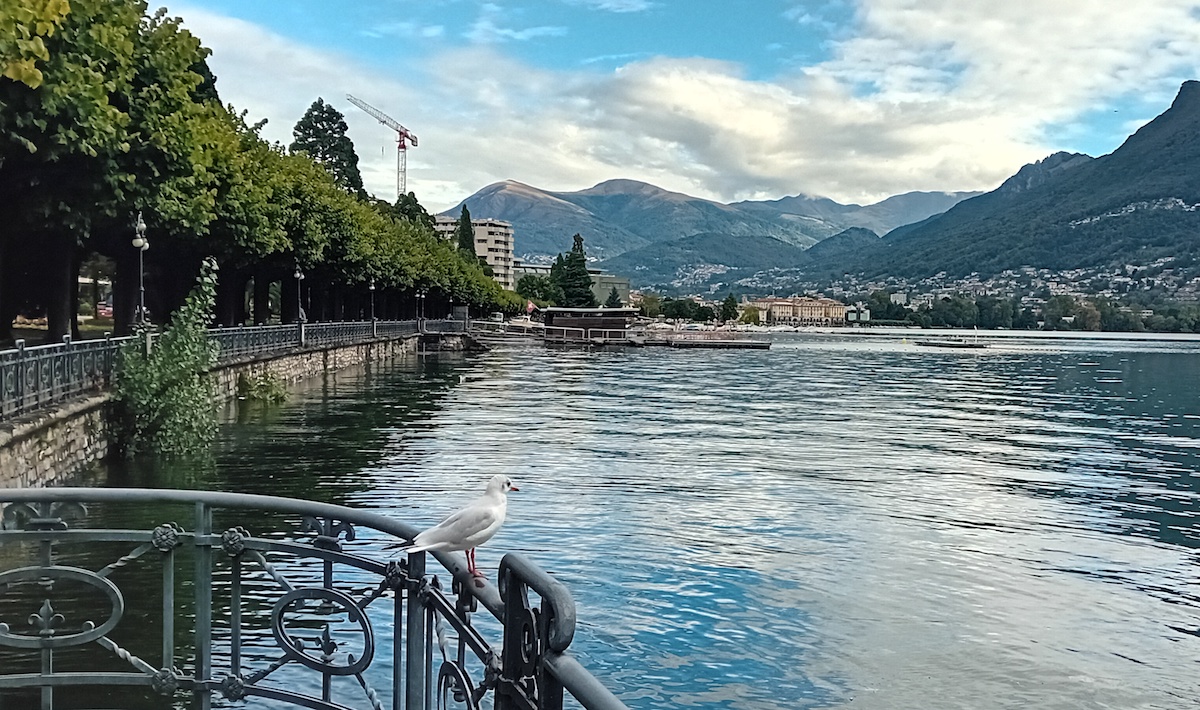Lugano, beautifully set alongside a mountain-ringed lake, has been part of Switzerland since 1513. However, the town is close to the Italian border and its people are among the 700,000 Swiss (from a population of 9 million) whose first language is Italian. Lugano is well worth a visit for its stunning scenery, diverse hiking options, sports, rich history, excellent food, and fine drinks. Moreover, for a town of 70,000, it also has a surprisingly extensive cultural footprint. What’s not to like? The primary focus for visual art is the Museo d’arte Svizzera italiana (MASI Lugano), which currently has three substantial temporary exhibitions, as well as its permanent collection, on display.
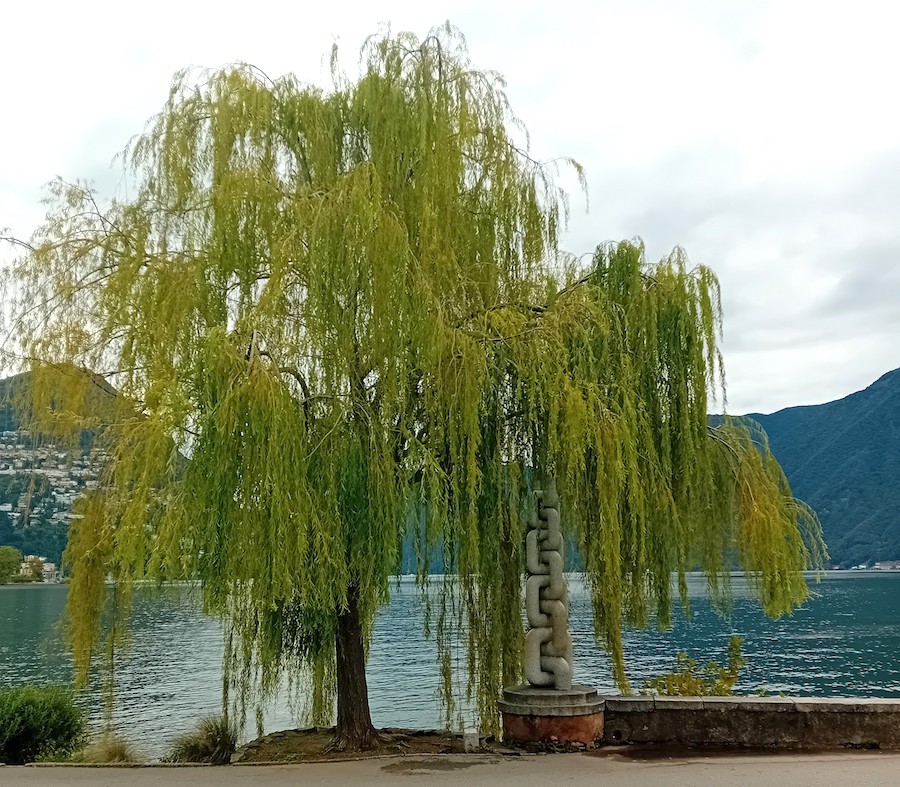
Piero Travaglini: ‘Cat 68’, 1968
There are numerous public sculptures scattered along the waterfront of Lake Lugano, but this one is exceptionally well-located, with a weeping willow adding to the striking setting. As for the work itself, it might be described as a tower of nine linked granite chains with an implied endlessness à la Brancusi. Travaglini (1927-2015) was a Swiss artist who tended to work with a more explicitly pop vocabulary, as seen in a nearby rhinoceros. Perhaps the chains stand for the integrated unity of a nation with four recognised languages (German, French, Italian and Romansch). Somewhat surprisingly, given the orderly reputation of Swiss society, it isn’t the original, which was completely vandalised and destroyed in 1975, but the artist’s replacement version.
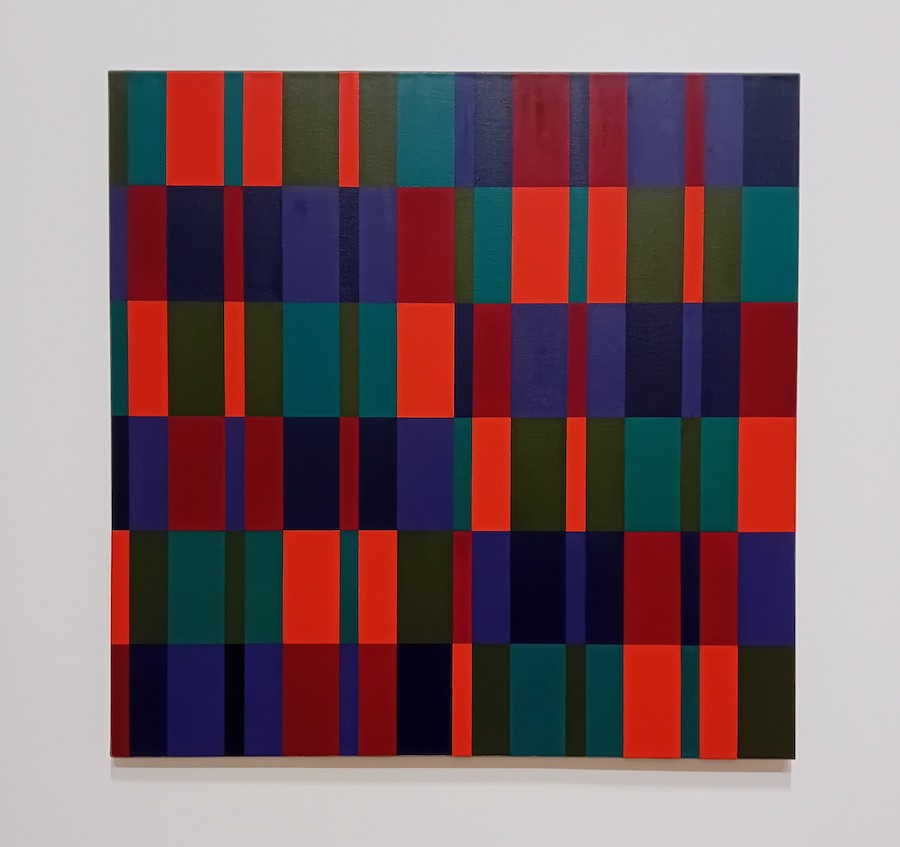
Richard Paul Lohse: ‘Six horizontal bands with six formally equal colour groups each’, 1950/62, at MASILugano
A first retrospective in over twenty years is indicative of how Richard Paul Lohse (1902–88) has only recently gained the profile that justifies a position alongside Max Bill as one of the two key figures in the Zurich School of Concrete Art. That is known for creating works on the basis of their own means and laws, as opposed to abstracting from any external reference. Compositions such as this can be appreciated optically as harbingers of both minimalism and op art, but Lohse was highly systematic. The structure is derived mathematically by building variations on an initial modular form. The first instance occurred when he worked it out in a number-heavy drawing, and the second when he realised the plan as a painting – often many years later, due to the demands of his parallel career as a graphic designer. The colours, though chosen more intuitively, are then applied according to the democratic principle that each be used equally. All of which carries a message: that good and orderly design is allied to a good and orderly society; and that democracy should lie at its heart.
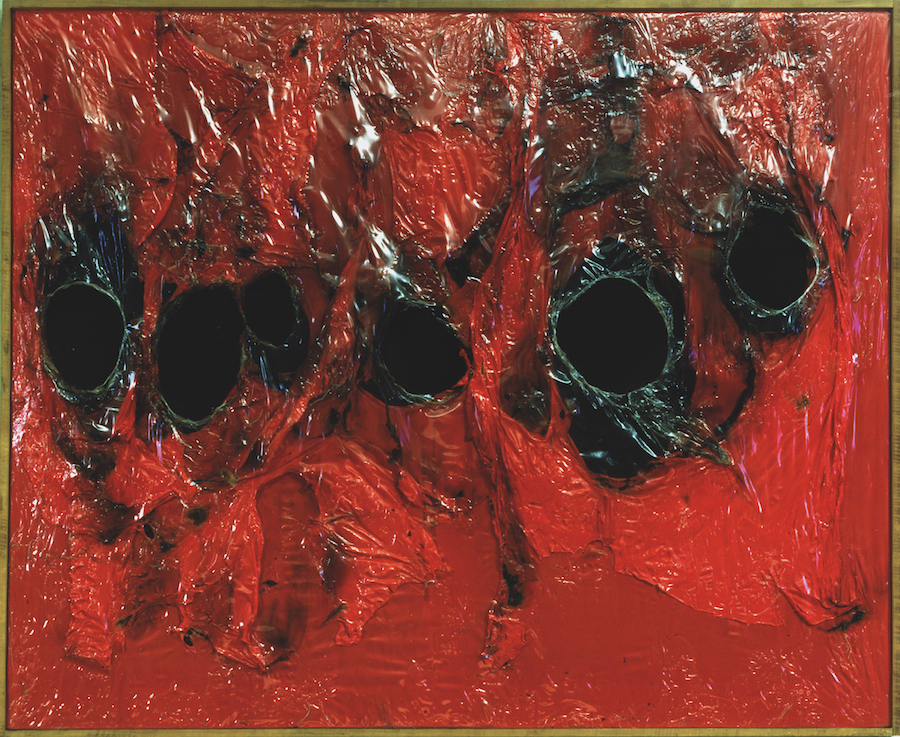
Alberto Burri: ‘Rosso Plastica’, 1962, at the Collezione Giancarlo e Danna Olgiati
Directly opposite MASILugano is the home of 700 high-quality modern works, many of which are Italian, amassed by the Olgiatis, who have promised the collection to MASI. The current exhibition showcases a selection from the collection, themed around materiality in the context of significant loans from Enrico Prampolini and Alberto Burri. It’s hard to imagine a better example of Burri’s ‘Plastiche’ – burned plastic sheets – than this one. The series was radical in using the most un-artlike of industrial materials, which came into widespread use in the 1950s and 1960s, and which he melted, pushed, and pulled into semi-sculptural shapes. ‘With fire’, says the collector, ‘Burri transforms the canvas into a physical and poetic field’.
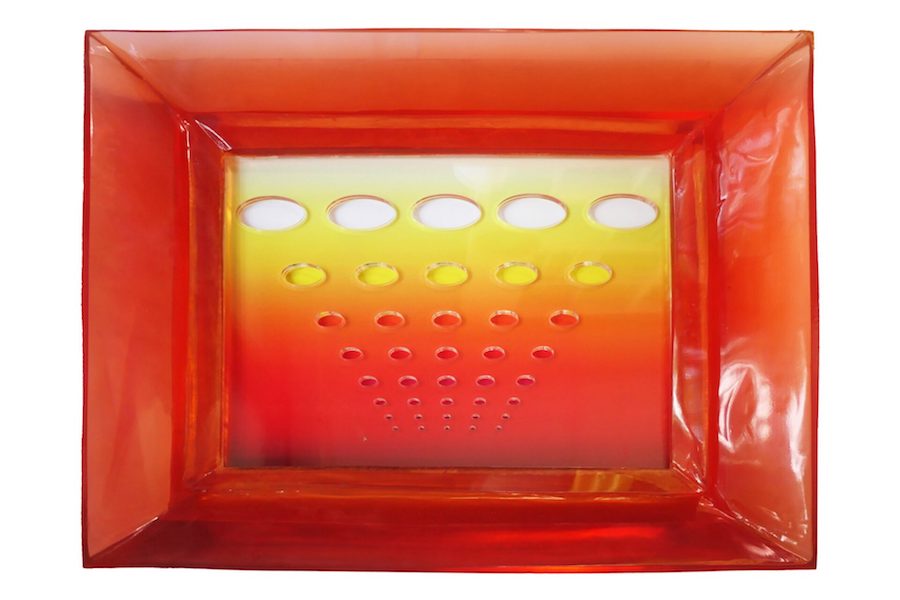
Chiara Dynys: ‘Go Away’, 2023, at Cortesi Gallery
Sticking with plastics, at the Lugano and Milan-based Cortesi Gallery, which formerly maintained a London presence, I liked the work of Chiara Dynys. She’s a mid-career Italian artist whose highly controlled and materially aware explorations of perceptual thresholds are very much in line with the gallery’s programme. ’Go Away’ frames a Plexiglas interior with methacrylate, a contrastingly malleable industrial product. Shapes cut into the centre complicate how the integral colour leaks into the setting. I stayed longer than the title seemed to propose. However, Dynys didn’t mean it that way: she says her inspiration was theoretical physicist Carlo Rovelli’s exploration of how black holes can transition into white holes, and ‘Go Away’ indicates ‘the act of surpassing and transcending the limitations of time. Isn’t that what artists strive to do every day?’
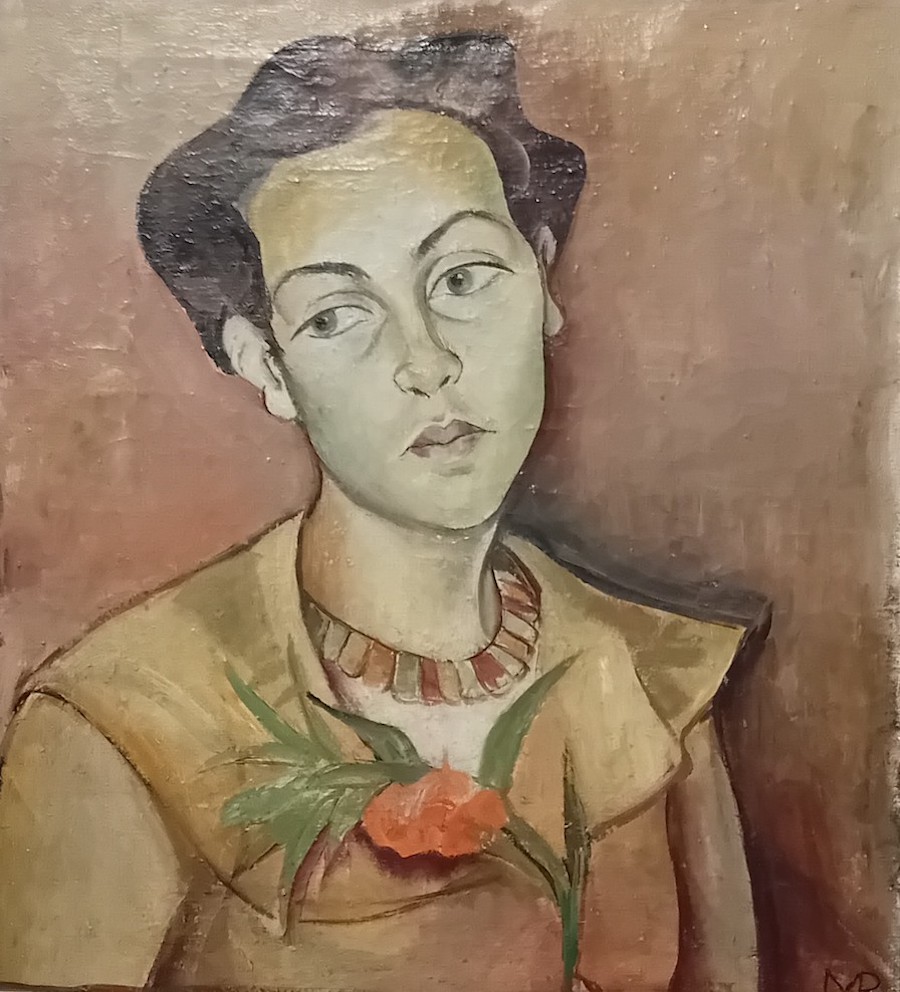
Maria Braun: ‘Portrait of Meret Oppenheim’, 1929, at MASILugano
Meret Oppenheim (1913-1985) was a beautiful woman whose lovers included Max Ernst, Alberto Giacometti, Man Ray, and Marcel Duchamp, which facilitated the sexism that saw her categorised – until recently – more as a muse than an artist. During the 1920s, Maria Braun (1896-1950) stayed regularly with Oppenheim’s grandparents in the Casa Costanza, their holiday home in the small village of Carona, above Lugano. Oppenheim and her parents were frequent visitors, and in 1929, Braun captured the 16-year-old’s developing presence. The portrait hangs typically in the Casa Costanza, but is currently part of the Carona-themed exhibition at MASILugano.
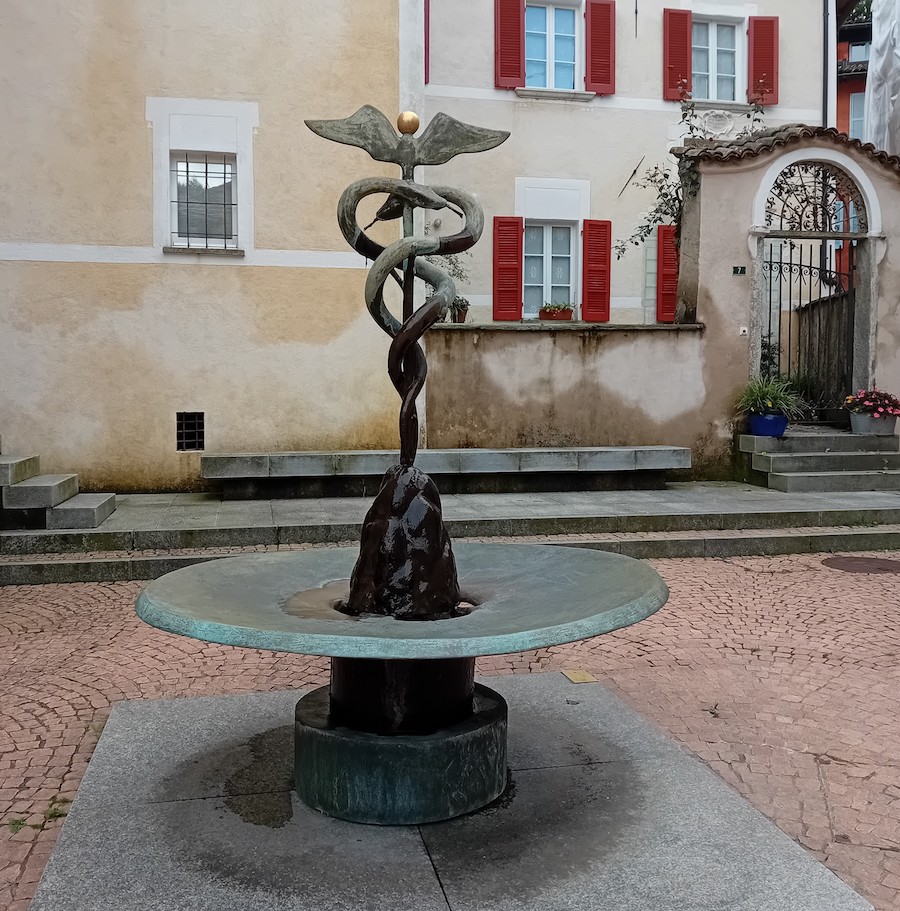
Meret Oppenheim: ‘Hermesbrunnon’, 1966–74
I was able to visit Casa Costanza, a private house, courtesy of Oppenheim’s niece. Meret restored it in the 1960s, calling it her Gesamtkunstwerk (‘total work of art’). The many fascinating items remaining there include the original design for her ‘Fountain of Hermes’, a bronze cast of which is in trickling operation in the square below. Two snakes wind around a staff for the messenger of the gods – and they’re positive snakes, as Oppenheim didn’t see them as originators of evil, nor as Freudian phallic symbols, but as emblems of the pursuit of knowledge, embodying transformation and representing both masculine and feminine aspects within a single person. Their potential is underlined by how the sculpture echoes the Swiss sign for a pharmacy.
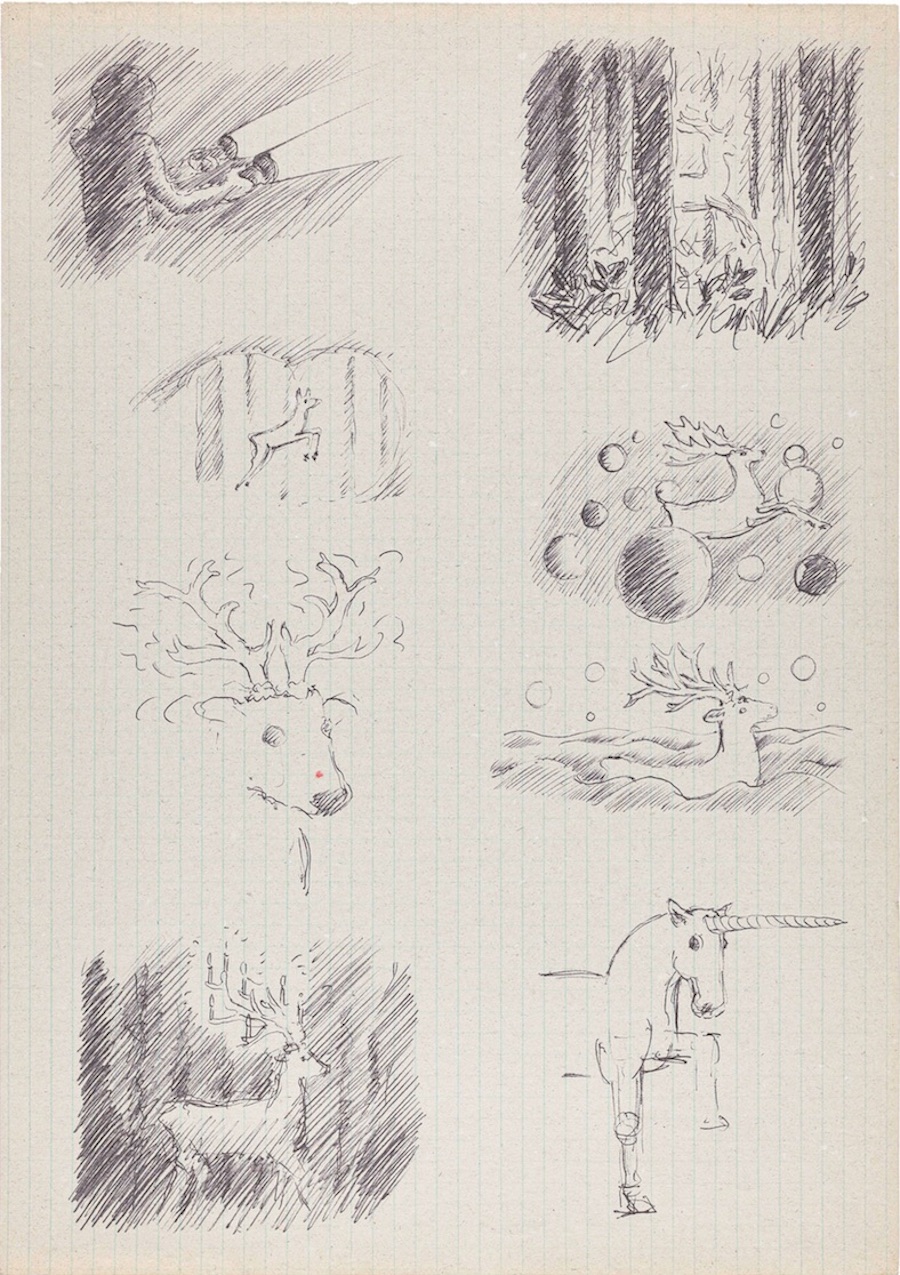
David Weiss: Untitled (from Wandlungen/Metamorphoses) 1978 at MASILugano
David Weiss (1946-2012) moved to Carona in the late 60s after travelling the world, declaring that he wanted to ‘work through all the impressions that I had soaked up like a sponge over the last eight years’. He invited a stream of artist friends to join him in the Casa Aprile, then owned by Meret Oppenheim and Burkhard Wenger, and the resulting community is celebrated in the exhibition ‘David Weiss: The Dream of Casa Aprile – Carona 1968-1978’ – only in 1979 did Weiss join up with Peter Fischli. Weiss worked mainly through drawings, including some 400 A4 sheets on which he had obvious fun depicting changes. Forms morph out of each other in columns, Chinese style, as lines flow from his pen and take on a life of their own as they show, you might say, ‘the way things go’.… ‘The playful allusion to the I Ching – the ‘Book of Changes’ refers’, says Stephan Kunz in his catalogue essay, ‘not only to the fact that the world is constantly changing, but also that conflicting forces determine our lives and actions’.
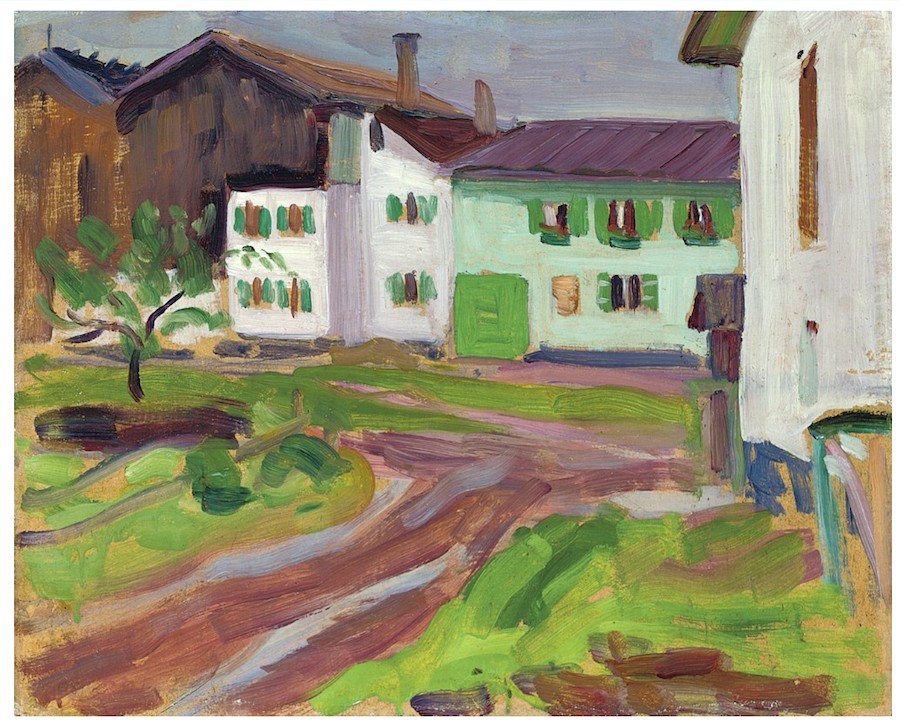
Gabriele Münter: ‘Bauernhof – Murnau’, 1908, at the Fondazione Gabriele e Anna Braglia
Another female artist with a growing retrospective reputation is Gabriele Münter (1877-1962), a founder-member of the Blue Rider group in 1911. She credited Kandinsky’s lessons of 1902 with helping her develop her swift style, which bridged late Impressionism and Expressionism, characterised by a plentiful use of the palette knife. They were a couple for the following decade. Münter valued spontaneity, saying that ‘When I begin to paint, it’s like leaping suddenly into deep waters, and I never know beforehand whether I will be able to swim’. This depiction of a German farmhouse is featured in the current selections from the 250-strong collection of the Braglia Foundation, which is celebrating its tenth anniversary this year in bespoke, free-to-enter lakeside premises.
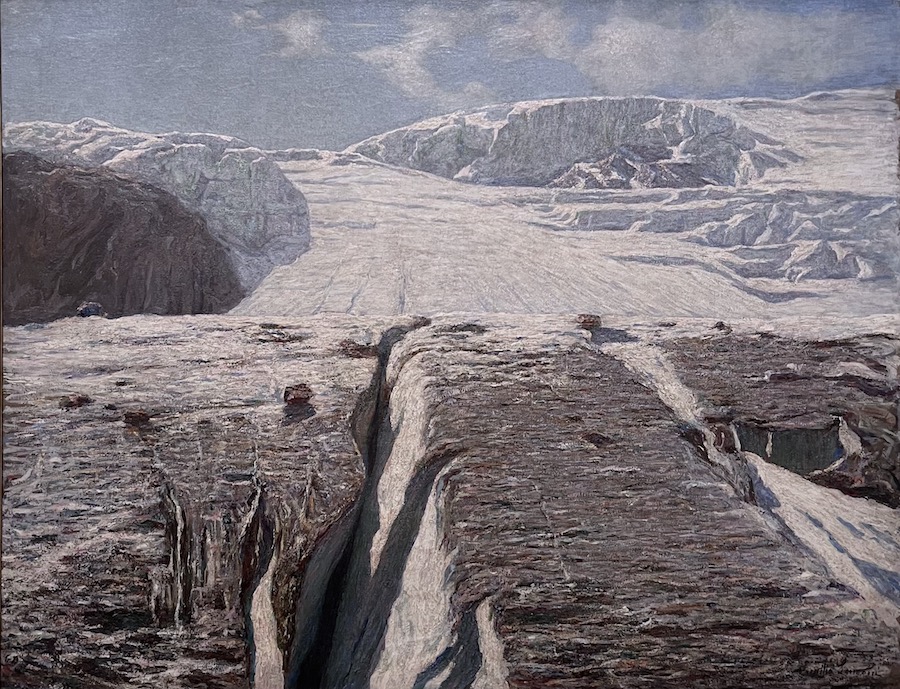
Emilio Longoni: ‘Glacier’, 1905 at MASILugano (permanent collection)
Lake Lugano was glacially formed, so it seems appropriate to conclude with this splendid 2m-high panorama – from the time when no one worried that ice was going anywhere soon. Emilio Longoni (1859 – 1932) was an Italian painter with Buddhist sympathies who shared a studio in Milan with the Divisionist painters Giovanni Segantini and Gaetano Previati. By the new century, his primary subject was the alpine landscape: here, his technique proves well-suited to conveying the many nuances within the overall white appearance of snow and ice, thereby capturing the luminous vibrations of the scene.

